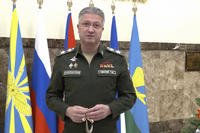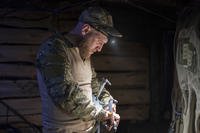You're a terrorist, dining with your paramour in a comfortable desert hideaway and one of your terrorist lieutenants calls with an operations update. Bored, your paramour rings her mother to complain about Abdul al Qaeda's overweening focus on work.
About 15 minutes later you hear a noise, look out the window and the next thing you know, you're dead.
That is a plausible scenario for the near future if the National Reconnaissance Office and its intelligence colleagues are able to further refine the accuracy of geolocation data, combine it with signals intelligence and then develop the tactics, techniques and procedures with their military colleagues to make it all work.
The first news of the new capability came from the director of National Reconnaissance Office, Bruce Carlson. The NRO operates the satellites that would provide most of the geolocation data and the signals intelligence. Carlson said the new capability, which he predicted would arrive "soon," was made possible by increases in accuracy of the geolocation data the intelligence community can provide.
Carlson first mentioned this at the Air Force Association conference but he provided very few details and no scenarios. Over the last two weeks I've spoken with intelligence professionals, congressional aides who follow space and space experts about just how this might work. The scenario at the top was suggested by a former intelligence official, who stressed that shortening the time to execute the kill chain was the greatest payoff from the new capability.
A congressional aide said that, over the long term, one of the biggest payoffs from the new capability might be to provide intelligence for a Prompt Global Strike system capable of striking almost any target around the world within 90 minutes. However, the aide and the intelligence official cautioned that providing intelligence for a target that might move would greatly complicate the target approval process. And all the sources said using such geolocation data with signals intelligence would be particularly challenging during a counterinsurgency when ensuring that civilians are not harmed is a paramount consideration. That's one of the reasons the scenario provided above works well. You've got confirmation of the target's location from two sources and have time to check with other intelligence assets that give you a clear picture of the target.
That ability to have more sources checking the target will be crucial to making this new capability useful, our sources said. And that, of course, is likely to slow the targeting, making it very difficult to achieve my favorite scenario -- you are talking on your cell in your Toyota pickup, hear a whooshing sound, look up and then, boom, you are dead. That will be possible, but it will be technically difficult, legally challenging and it will risk killing innocent civilians.








